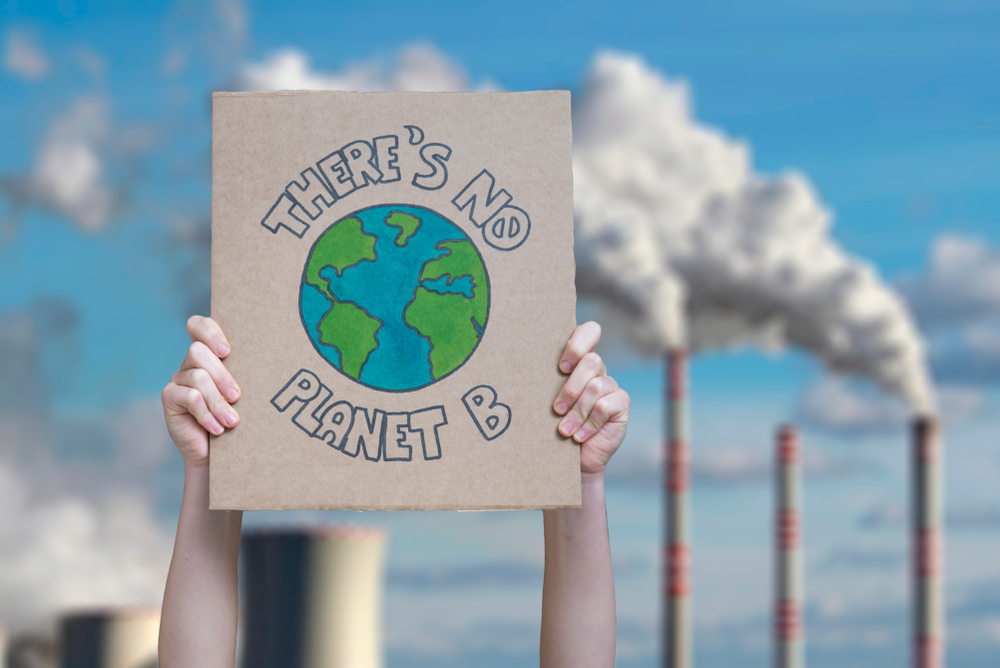
The modern world faces an ever-approaching enemy. The climate crisis gets closer as humanity continues to ignore the danger posed by continuing to pollute our ecosystems. Science agrees that climate change is not only factual, but permanent damage is already inevitable. Climate change is no longer a prediction but a real crisis kicking down our door. Climate change is caused by a number of factors but one of the biggest contributors is the amount of greenhouse gasses polluting Earth’s atmosphere. The amount of greenhouse gasses we have produced since the start of the 1800s has skyrocketed. The Industrial Revolution was a gigantic factor in this, as gigantic factories were built inside of urban cities, polluting densely populated areas. Importantly, this pollution affects the water and surrounding land, effectively poisoning it with harsh chemicals.
The proof that Earth’s surface is warming can be tasted by comparing modern weather readings which are showcasing extreme weather patterns. There are also temperature measurements taken on ships and later at weather stations dating back to the mid-1800s. There has already been an increase of 2.2 degrees Fahrenheit or 1.2 degrees Celsius. This has led to drastic effects which only threaten to become worse. The greatest warming happened in the late 20th century. The region warmed the most has been the Arctic with more than 4 degrees Fahrenheit. This marks the hottest climate in 1000 years. The ocean has been a major absorber of greenhouse gasses causing it to increase in temperature. Between 1997 and 2015, the ocean absorbed more heat than in the previous 130 years. The effects of this lie in extreme weather events. These include floods, droughts, wildfires, and more frequent storms. A rapid increase in industry has spurred these catastrophic events. Science agrees that climate change is real, with over 97% of publishing climate scientists agreeing and also adding that humanity has caused it.
The effects of the climate crisis are irreversible, The international agreements such as The Paris Climate Conference have proven to be ineffective. The consequences for that failure could not be more dire. Within the next two decades, temperatures will most likely rise more than 1.5C above pre-industrial levels. The current Secretary General of the United Nations, Antonio Guterres, signaled code red and stated that humanity needed to stop its reliance on fossil fuels for any chance of avoiding major catastrophe. The burning of fossil fuels is putting billions in immediate risk. The rising sea levels risk drastic flooding, especially in the maritime provinces. Coastal towns and cities are at major risk. This can be seen currently in Venice. Many of the buildings across the city are sinking and the city will most likely be consumed by the sea by 2100. The Arctic has shrunk 40% since 1979, and this devastation is not limited to far-away lands. In Canada, climate change directly affects agriculture; the warmer climate increases the chance of drought as well as increased flooding in cities close to water. In the Atlantic, it will lead to extended hot temperatures, reduced moisture in soil, and more which will make agriculture significantly more challenging in the province.
By 2050, the effects in Canada will irreparably change the province. In Toronto, there will be 51 days of the year above 30 degrees which is much more extreme then the current average of 16. There will be an increased chance of freezing rain events and wildfires, and the pollution from that smoke will infect communities across the globe.
Important to note is the impact of environmental racism. Regularly, BIPOC communities are left behind in climate initiatives and are unevenly affected by environmental devastation. In Chemical Valley, Ontario, the Anishinabe people have been particularly affected by this as the pollution has led to destruction of their land and air. There are serious health risks involved with breathing in pollution for such a long period. In Nova Scotia, an example can be seen in the community of Africville, which used to be a major African Nova Scotian community made up largely of the descendants of enslaved peoples. The government would regularly use this community as a dumping ground before bulldozing and ripping people away from their home to be relocated.
With such a large mountain of challenges it can be daunting, however necessary, to ask what can be done to address climate change. What essentially must be done is to stop humanity’s reliance on fossil fuels, especially coal and oil. In order to make this transition we should embrace cleaner energy such as solar energy and wind energy. Public transportation should also be more commonly used, as individual cars are major polluters. In order to do this, Canada and Nova Scotia should increase their funding for public transportation. In particular, having electric buses would reduce a large amount of the population’s reliance on oil. Currently, with electric cars hidden behind large prices, electric buses would allow the public to choose electric transportation without spending tens of thousands of dollars. A high speed electric rail system across canada would drastically speed up travel times, and lower the need for planes, which are also major polluters.
The biggest polluters are businesses and corporations. Fight back against consumerism by only buying things you need or truely want. Unnecessary purchases are future landfill stuffing. In this transition to a cleaner economy and environment, Indigenous voices are essential. The ecological wisdom developed by Indigenous groups is incredibly valuable and can help to make the world a better, cleaner, and more sustainable place.



